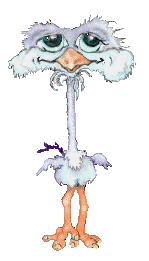


Body size is an obvious limitation for flight. Beyond certain dimensions and weights, an animal's muscles do not have enough power to take off. Development of more muscles to overcome this problem would be counterproductive as it would weigh the animal down even further (Bramwell, 1970). The Pteranodon, the largest flying animal that ever lived, had a wingspan of over 27 feet but weighed merely 25-55 pounds. Its lack of pectoral muscles suggests that the animal soared rather than flapped its wings. It had to have taken off from cliffs or from the crests of waves in order to become airborne, and it must have had to land gently or else its bones would have been crushed on impact. Please visit Pat Lyons' website in the Hooper Museum for more information on the pterosaurs.
The dragonflies of the Carboniferous had wingspans of up to 2.5 feet. Flying, alone, requires a great deal of energy, and this requires oxygen diffusion to provide the insects with the flying fuel. Scientists believe a dragonfly of such size could not take wing in today's atmosphere because our oxygen levels are not high enough to provide the energy via the tracheal system (Howard et al., internet memo).
All in all, large body size makes flight very difficult. Consequently, extinct moas and dodos, and extant ostriches and emus, are sentenced to a life with both feet on the ground. In addition, birds are not viviparous because they could never carry the weight of a fetus during flight. Flying, therefore, is an activity reserved for the small!


